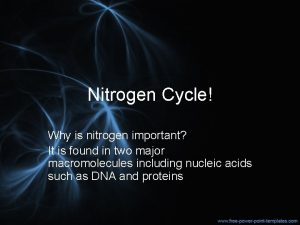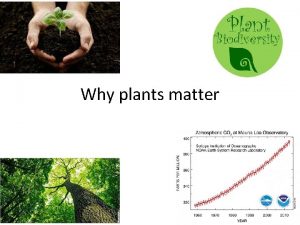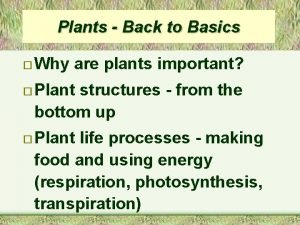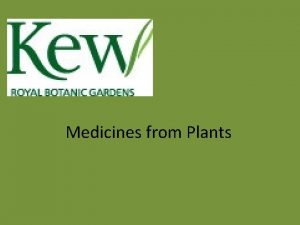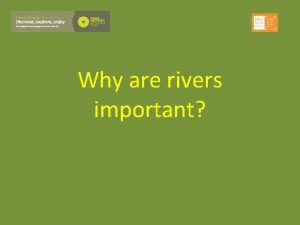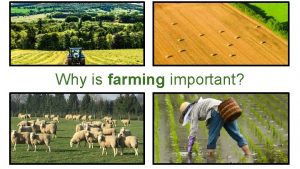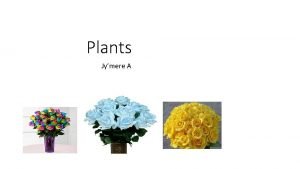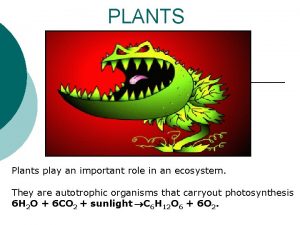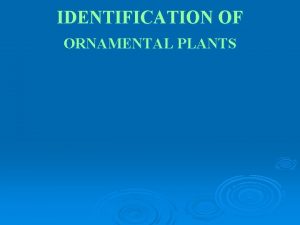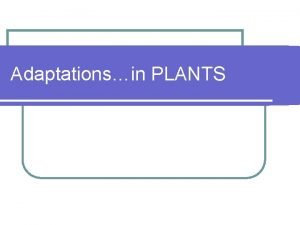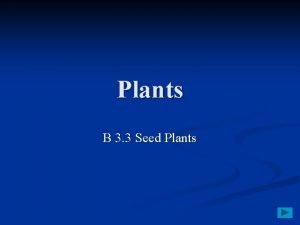PLANTS A Why are plants important Plants are















- Slides: 15

PLANTS

A. Why are plants important? Plants are essential for life on our planet. They provide all the energy for the ecosystem, because they can get energy directly from sunlight. Humans need plants for breathing, eating, clothing, medicine, and housing.

B. What do MOST plants have in common? ALL plants have cell walls & chloroplasts. Most plants have some form of roots, stems and leaves.

C. Let’s start at the bottom… Roots Structures designed to pull water and minerals from whatever material the plant sits on. Provide support for plants in the form of an anchor in whatever the plant sits on.

D. Stems Transport food and water. Act as support structures for the plant. Stores food. Main part of the vascular system of the plant.

Picture from http: //biology 4 kids. com/files/plants_main. html E. Plant Vascular System Just like your body has the circulatory system to transport food & water to your cells and waste away from the cells, plants have a vascular system for transportation. The main parts are called the xylem and phloem.

F. Xylem System of tubes and transport cells that circulate water and dissolved minerals from the roots up to the rest of the plant. Picture From http: //www. mrcorfe. com/KS 4/Edexcel/Biology/B 2 -3 -Energy. Flow/images/Transpiration. jpg Picture from http: //biology 4 kids. com/files/plants_main. html Xylem under an electron microscope. Image from http: //www. jic. ac. uk/microscopy/Gallery/data/images 1/stem _zinnia_leaf_xylem. jpg

G. Phloem Pipes or tubes in the plant that transports the sugars and other molecules created by the plant’s leaves go DOWN to the rest of the plant. Picture from http: //www. paintthelight. net/Botany. Project/Activities/adaption_plants. htm

H. Finally…we made it to the leaves. Uses a process known as photosynthesis which uses light to turn carbon dioxide and water into sugar.

I. TYPES OF PLANTS: VASCULAR: Have tube-like structures and carry water, nutrients and other substances throughout the plant. (EX: sunflower, Douglas Fir, Apple Tree) NONVASCULAR: Do not have these tube-like structures and use other ways to move water and substances. (EX: moss, hornwort, liverwort) <http: //techalive. mtu. edu/meec/module 01/images/transpiration. j pg>

J. Types of VASCULAR PLANTS: * Gymnosperm: Vascular plants that produce seeds and are not protected by fruit. Gymnosperms are broken down in to 4 divisions: conifers, cycads, gingkoes, gnetophytes (EX: Pines and Redwoods)

* Angiosperm: Vascular plants that flower and have a fruit that contains one or more seeds. There are 2 types of angiosperms: monocots and dicots. (EX: the flowers and fruit of a peach tree)

K. Monocots and Dicots ** A cotyledon is part of a seed often used for food storage. Monocots: Prefix Dicots: Prefix DI MONO means 1. means 2. Dicots have Monocots have one two cotyledons cotyledon inside their seeds. They have flower parts in multiples of 3. (EX: 4 or 5. (EX: peanuts, lilies, corn, and green beans, and wheat) apples. )

Examples of Each…… MONOCUTS: DICOTS:

L. Deciduous: Trees or shrubs that shed their leaves annually. (yearly) (EX: Dogwood, Maple tree, and Crepe Myrtle) M. Coniferous: A tree that bears cones and evergreen needlelike leaves. (EX: Pine tree, Spruce tree, and Fir tree)
 Mikael ferm
Mikael ferm Why why why why
Why why why why Importance of plants
Importance of plants Why are seedless plants important
Why are seedless plants important Don't ask why why why
Don't ask why why why Example of a news story
Example of a news story From most important to least important in writing
From most important to least important in writing Least important to most important
Least important to most important Crucifixion quotes bible gcse
Crucifixion quotes bible gcse Footwork rule in netball
Footwork rule in netball Items that distort or prevent communication
Items that distort or prevent communication Why experience is important
Why experience is important Why is strategic management important
Why is strategic management important Why is water important to living things
Why is water important to living things Why is reading so important
Why is reading so important Why is physical diversity important
Why is physical diversity important


